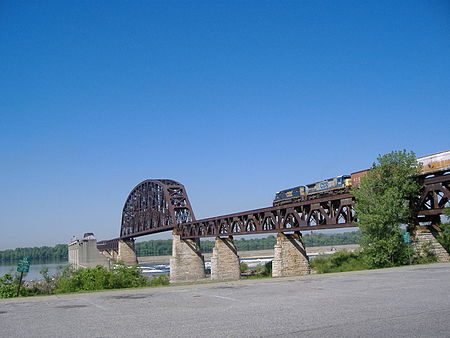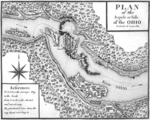Fourteenth Street Bridge (Ohio River)

The Fourteenth Street Bridge, also known as the Ohio Falls Bridge, Pennsylvania Railroad Bridge, Conrail Railroad Bridge or Louisville and Indiana (L&I) Bridge, is a truss drawbridge that spans the Ohio River, between Louisville, Kentucky and Clarksville, Indiana. Built by the Louisville Bridge Company and completed in 1870, the bridge was operated for many years by the Pennsylvania Railroad, giving the company its only access to Kentucky. Ownership of the railroad and the bridge passed on to Penn Central and later Conrail, which then sold the line from Louisville to Indianapolis, Indiana to the Louisville and Indiana Railroad, the current bridge owner. The draw portion of the bridge is a vertical-lift span, built in about 1918 in place of a swing span. The towers and machinery of the lift span were designed by Waddell and Son, Inc., and there is a plaque on the SW tower reading, "Waddell Vertical Lift Bridge, Waddell and Son, 1917". The draw span is across the upstream end of the Louisville and Portland Canal, which includes the McAlpine Locks and Dam. Ohio River traffic passes through this canal to navigate past the Falls of the Ohio.
Excerpt from the Wikipedia article Fourteenth Street Bridge (Ohio River) (License: CC BY-SA 3.0, Authors, Images).Fourteenth Street Bridge (Ohio River)
Ohio River Greenway,
Geographical coordinates (GPS) Address External links Nearby Places Show on map
Geographical coordinates (GPS)
| Latitude | Longitude |
|---|---|
| N 38.269444444444 ° | E -85.764527777778 ° |
Address
Fourteenth Street Bridge
Ohio River Greenway
40202
Indiana, United States
Open on Google Maps







